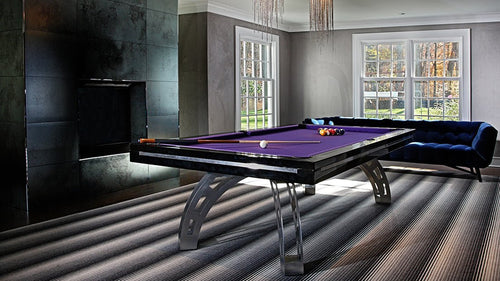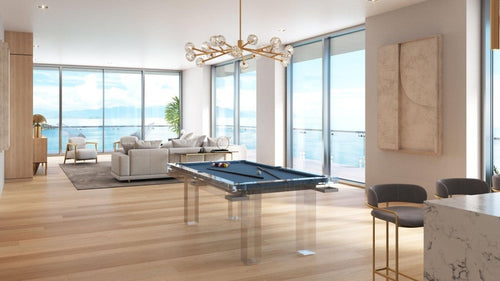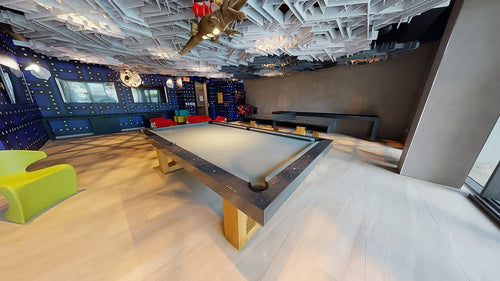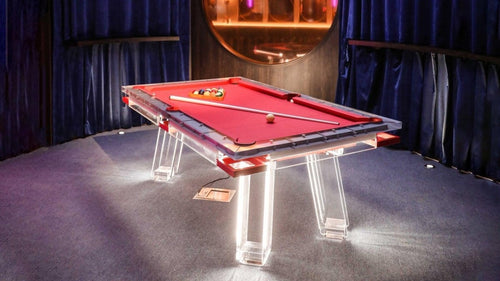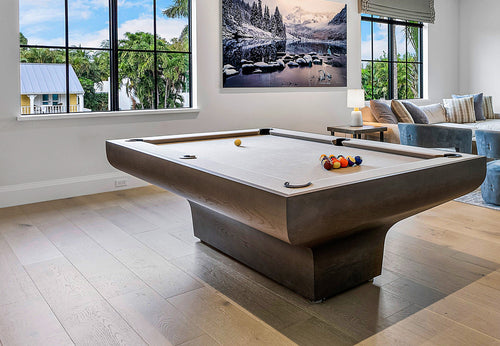Enjoy our modern designs
Estimated Read Time: 5 mins |
Long before snooker claimed center stage, Blue Pool offered players a blend of pyramid-style potting and strategic coloured-ball play. Its framework feels familiar to snooker fans yet carries its own charm: pocket reds from a tight triangle, then decide whether to chase another red or risk going after the lone blue. Though largely eclipsed by modern games, revisiting Blue Pool is like unearthing a lost chapter of cue-sport history.
Equipment & Table Layout
Start with your standard pocket billiard table. Rack fifteen red balls in a neat triangle—apex square on the pyramid spot, mirrors the setup once called Pyramids. Place the blue ball alone on the centre spot, standing ready as the high-value target. The cue ball begins in hand, giving each break full control and ensuring every opening stroke can be tailored to table conditions.
Core Rules & Flow of Play
To launch any turn, you must first pocket a red. Nail it, and you face a strategic crossroads: settle for another one-point red, maintaining a steady accumulation, or nominate the blue for its two-point reward. Pocket it cleanly, and the blue is respotted—rewarding both risk-takers and tactical thinkers. Misjudge the angle or pace, and you not only lose your turn but also cede table control, handing your opponent the chance to reset and strike.
Scoring Dynamics
Red balls each count one point, while the blue typically scores two—though players may agree on higher values to ramp up the stakes. Because the blue returns to its spot, skilled players can engineer recurring opportunities for the lucrative two-pointers. However, every miss or foul slashes potential momentum, so measured judgment on when to press for the coloured ball is vital.
Strategic Layers
In contrast to open-table games where any ball can go first, Blue Pool forces a red-first requirement that shapes safety play. Taco-style safety safeties can leave clusters of reds blocking paths to the blue. Positioning the cue ball becomes a battle of angles and pace: set up multi-red runs when the blue looms perilously close to a pocket or spool out safe snookers when it sits inconveniently. The ebb and flow between red accumulation and blue-ball gambits keeps every frame alive.
Why It Fell Out of Favor
Clifford himself noted that by the 1960s, Blue Pool had been “superseded by snooker.” With snooker’s array of six colours, more intricate scoring order, and tournament infrastructure, cue-sports enthusiasts gravitated toward its heightened complexity and formalization. Blue Pool’s simpler palette and lighter formal rules made it less compelling for serious competition, though ideal for casual or revival play.
Bringing Blue Pool Back Today
Modern players can revive Blue Pool as a heritage game—perfect for club socials, historical exhibitions, or laid-back evenings with friends. Its quick setup and straightforward scoring let newcomers join immediately, while veterans can explore nuanced safety battles and high-reward blue-ball tactics. House rules can adjust blue-ball value, introduce two-player variants, or even add a “shell-out” twist where the final blue scores triple for a dramatic finish.
Conclusion
Blue Pool stands as a testament to pocket billiards’ rich tapestry of variants. Fifteen reds, a solitary blue, and a simple red-first rule combine to produce a game that’s both approachable and strategically rewarding. Though overshadowed by snooker’s grandeur, its revival promises lively, history-steeped matches that celebrate the nuance of coloured-ball play in its purest form. Dust off your table, rack those reds, and let the blue-ball challenges begin.



